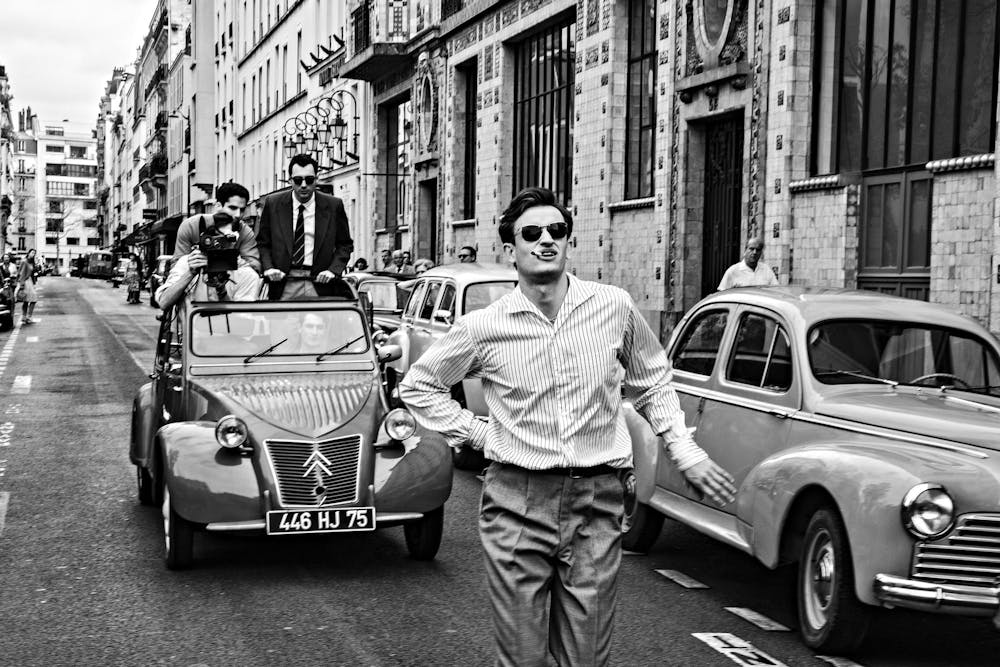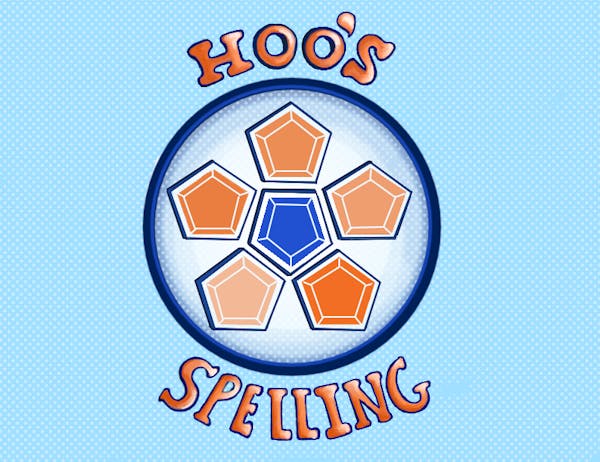Accomplished American director Richard Linklater details a fictional re-telling of the making of Jean-Luc Godard’s “Breathless” in his new film “Nouvelle Vague,” whose title translates to “New Wave.” Screened before theatrical release at the Virginia Film Festival Sunday, Linklater’s “Nouvelle Vague” depicts Godard briefly before and throughout the production of “Breathless.”
Jean-Luc Godard is often considered a pioneer of the French New Wave cinematic movement — a movement beginning in the late 1950s known for embracing unconventional approaches to film and championing the accessibility of making films. Godard’s first feature film, “Breathless,” which focuses on the tragic story of a young car thief, is one of the hallmark and earliest works of this avant-garde cinematic movement.
“Nouvelle Vague” is full of fanciful moments and important reflections on the near impossibility of the creation of “Breathless.” Linklater’s movie blurs the lines between documentary and experimental cinema, culminating in both vibrant, complex depictions of the characters and accurate, captivating re-creations of iconic scenes of “Breathless.”
It is a worthwhile watch for avid fans of cinema as well as fans of Linklater’s past works. The film is fast-paced and lively — many shots show characters in movement. This kineticism is a central characteristic of the French New Wave, which is filled with displays of vibrant life and visceral emotion.
While the film is by no means completely emulative of the style of French New Wave, Linklater’s film pays significant homage to the style of Godard. A plethora of name cards, close-ups and occasional wobbly shots permeate the 105 minute runtime. Linklater shot the film on 35mm black-and-white film, mimicking the aesthetic of many French New Wave works.
“Nouvelle Vague” is a sexy film despite lacking in nudity and sexual interactions. Linklater’s schleek depictions of Paris in 1959 recall the same flashy, cool vibe of Godard’s iconic sunglasses — which Linklater ensures Godard dons for the entirety of the film regardless of the occasion or time of day.
However, the film is not simply a tribute to Godard and his work. Graduate Engineering student Jesse Smith emphasized the ambiguity in Linklater’s depiction of Godard.
“I can't tell if [the movie] is trying to depict Godard in a good light or he’s just whimsical with how [Godard] is making a movie,” Smith said.
This ambiguity of Godard’s character elevates the film. Linklater presents the seminal auteur not simply with reverence but also with criticism of his personal vices. Godard, cavalier and outspoken, undoubtedly could be an extremely difficult collaborator.
One particularly telling relationship that Linklater details is the relationship between Godard and his producer, Georges de Beauregard. Beauregard gives Godard large creative freedom and vital money for the production of his first feature, but tension dominates their relationship. In one scene, Godard, spotted playing pinball during one of his allotted 20 days of shooting, nearly comes to blows with Beauregard. After the completion of “Breathless,” Godard remarks that he cannot imagine having a producer who is not also his friend in an uncharacteristically poignant moment for Godard. But the sincerity of this friendly remark is up to the viewer.
At any moment in the film, Godard is audacious, pretentious, self-serving, witty, self-deprecating, frustrating, boyish and charming. Linklater and the performance of actor Guillaume Marbeck convey a moving, layered depiction of the famed Godard. Linklater centers the film around this captivating performance. Marbeck’s phenomenal performance as Godard should mark a breakthrough in his career.
Another standout in the film is the performance of Zoey Deutch, who starred in Linklater’s criminally underrated “Everybody Wants Some!!” and plays Jean Seberg, an American movie star who took a chance by starring in Godard’s “Breathless.”
Deutch contains all of the natural whim, beauty and emotion needed to star in a Godard film. In one scene that is original to Linklater’s narrative, she dances on a fountain with jazz music in the background after her first meeting with Godard. While Deutch appears as if she could star in “Breathless,” she also conveys with maturity both the frustrations and delights that must have arisen from working with the peculiar Godard.
Fourth-year College student Reese Robers pointed out the efficacy of Deutch’s accent, which mirrors the learned French accent of Seberg and seems emblematic of Linklater’s fastidiousness.
“I thought it was neat that you could tell that she was someone who had learned French, rather than someone who was speaking it naturally,” Robers said.
Linklater stands out as one of the most interesting and innovative titans of American cinema. “Nouvelle Vague” is eruditely reflective on the importance of evolutions in filmmaking — a topic relevant to an industry that is both shrinking and growing increasingly vapid.
It would be highly prudent to see “Breathless” before seeing this film, but it is not required to enjoy the film. Regardless, this unique and fantastic film will send viewers pining to watch the films of the French New Wave. When the film releases in theaters this upcoming weekend, lovers of film should hurry — somewhat breathlessly — to their nearby cinemas.







